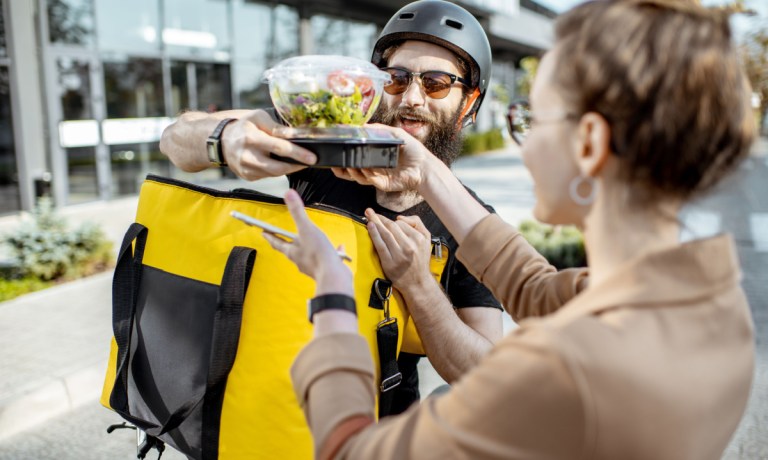Sam Nazarian Reportedly Acquiring Nextbite as Delivery Takes a Hit

Hospitality mogul Sam Nazarian, CEO of nightclub and restaurant group SBE, is reportedly stepping up his ghost kitchen efforts even as consumers pull back on restaurant delivery in the face of rising prices.
Nazarian, who has been operating in the virtual brand space for years with his C3 food technology platform and restaurant company, has acquired ghost kitchen platform Nextbite, according to a report Tuesday (June 13) from The Real Deal, which additionally cited an insider who stated that the company was asking for around $30 million.
Nextbite did not immediately respond to PYMNTS’ request for comment.
The news comes after C3, which was hugely active throughout 2021, announcing new restaurant concepts, expansions and partnerships nearly every month, has been quieting down in the past couple of years. In fact, the company has been largely quiet since the start of 2022, after it announced two major C-suite announcements — Uber Eats’ Pasha Mehran and Overstock’s Vikram Raghavan.
According to Mehran and Raghavan’s LinkedIn pages, it seems both have left the company, with the former’s page showing an end date of July 2022 and the latter’s making no mention of C3 at all. As such, it would seem that Nazarian has largely turned his focus away from the group, now tapping Nextbite’s existing expertise in the area. Nextbite, for its part, works with major brands including Nathan’s Famous, Kellogg’s and Nestlé Tollhouse.
SBE Entertainment Group did not immediately respond to PYMNTS’ request for comment.
The timing of Nazarian’s reported acquisition is somewhat surprising, given that this does not seem to be the best time to get into restaurant delivery, with inflation prompting diners to shift to more affordable channels.
Research from PYMNTS’ study “Connected Dining: Rising Costs Push Consumers Toward Pickup,” which drew from a survey of more than 2,100 U.S. consumers earlier this year, found that, while 51% of diners had ordered their most recent meal for on-premises dining, 39% had acquired their last restaurant order via pickup channels and 10% via delivery.
These trends have likely only accelerated, as restaurant inflation has picked up steam. The latest data on record from the U.S. Bureau of Labor Statistics (BLS) Consumer Price Index for All Urban Consumers (CPI-U) showed that, in May, restaurant prices rose 8.3%, well above the grocery inflation rate of 5.8%.
According to data from “Connected Dining: Third-Party Restaurant Aggregators Keep the Young and Affluent Engaged,” a PYMNTS report based on a March survey of nearly 2,300 U.S. consumers, 40% reported having used an aggregator at least once in the last six months, but only 5% of those surveyed reported having made their most recent food purchase through a third-party platform.
Still, adoption is on the rise. The study found that 44% of aggregator users made more purchases via aggregators this year than last year, and the consumers stepping up their engagement tend to be younger and more affluent. In fact, 69% of Generation Z consumers and 48% of those earning more than $100,000 per year have been ordering from restaurant aggregators.
That said, Nextbite’s model appears to be a sound one, creating ways for restaurants to generate more profit from their existing kitchens while driving off-hours sales.
“We’ve really wanted to help these restaurants to maximize their underutilized kitchens, ’cause every restaurant has these opportunities to sell more food if they had that demand to do so,” Nextbite CEO Alex Canter told PYMNTS’ Karen Webster in an interview. “With IHOP, for example, they’re 24/7 at the majority of their locations, but they’re really busier in the mornings than they are at night. So, we’ve designed two concepts for them: a grilled cheese concept and a quesadilla brand that is performing exceptionally well from 9 p.m. to 5 in the morning.”